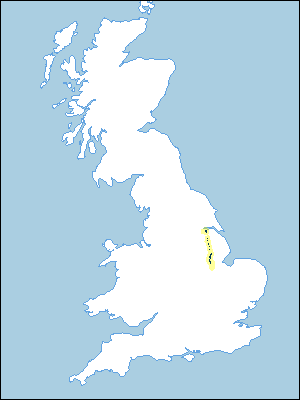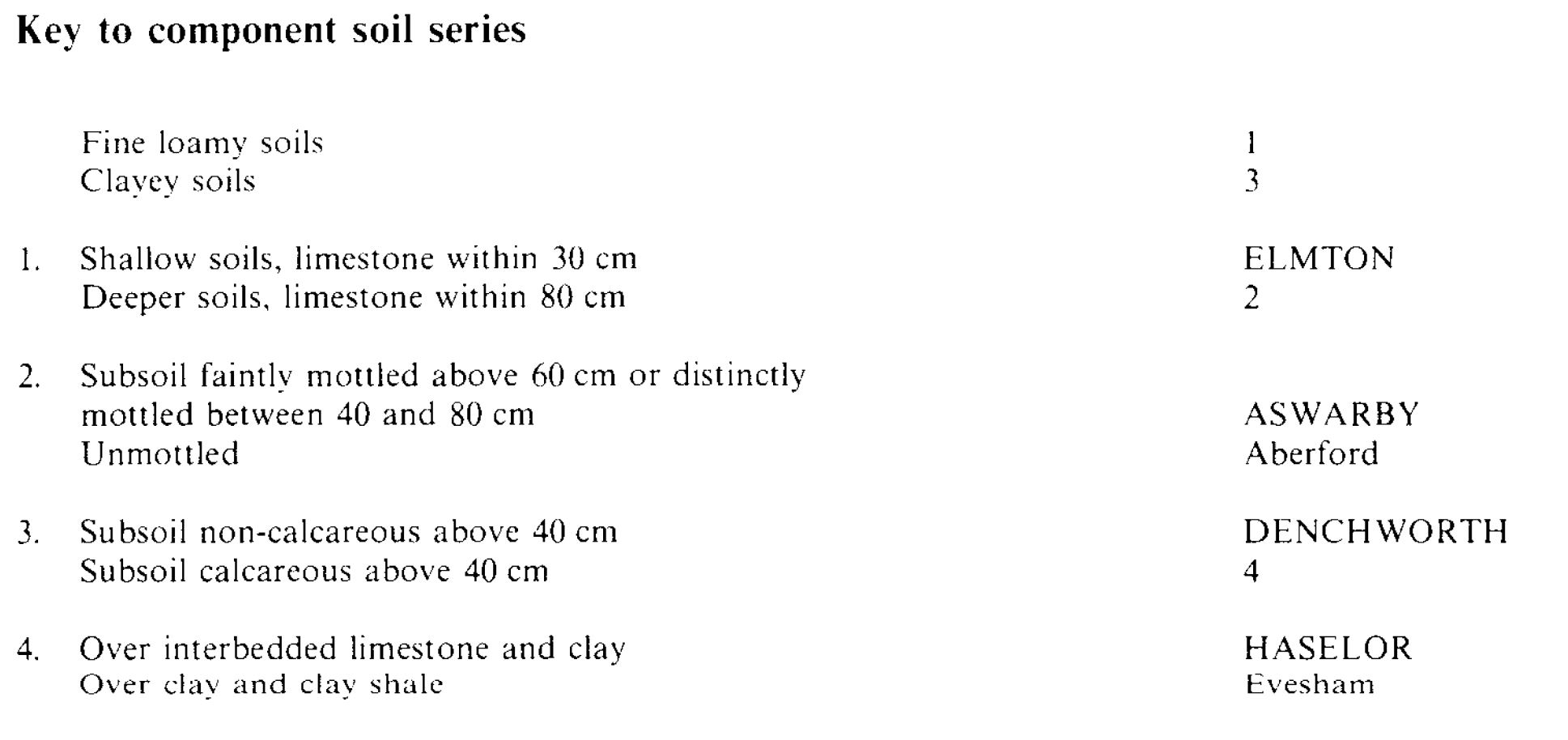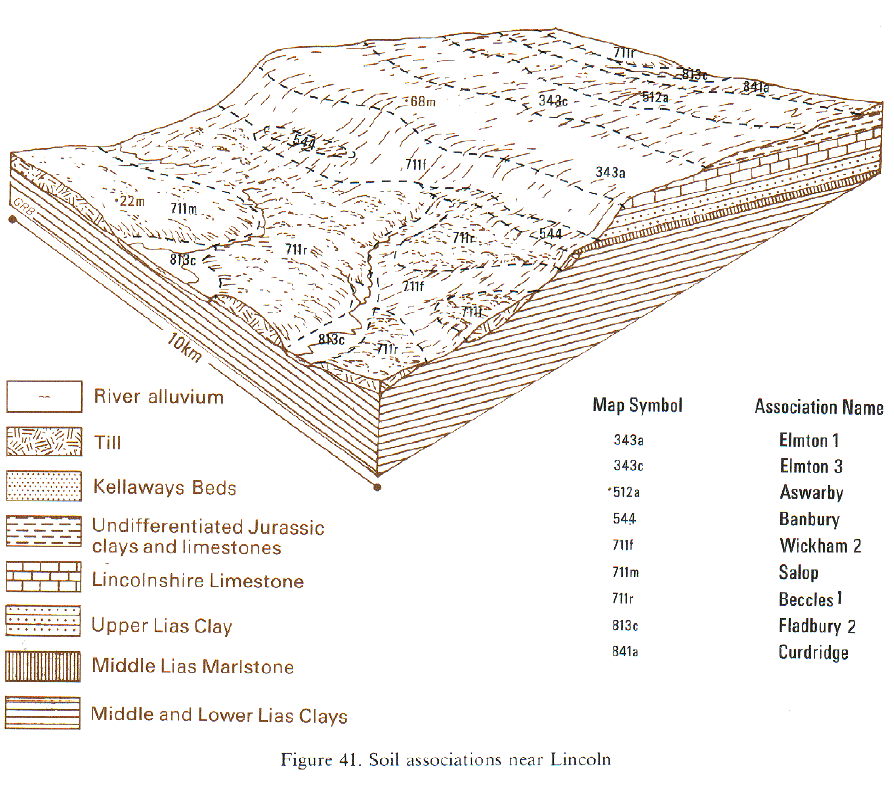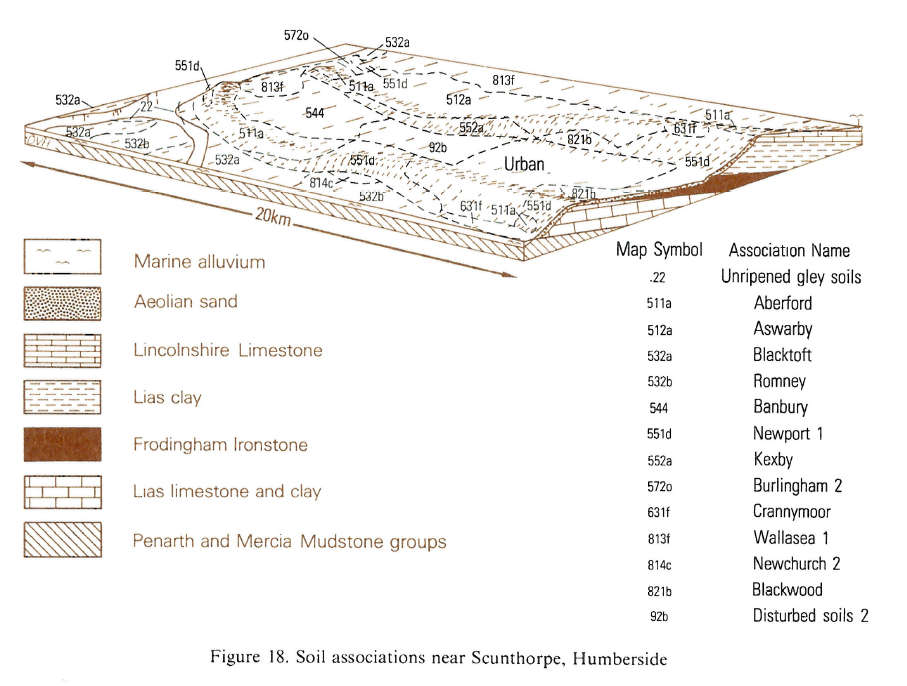
Soil Associations
0512a ASWARBY
Soil and site characteristics
Shallow permeable calcareous fine loamy soils over limestone, some affected by groundwater. Some slowly permeable seasonally waterlogged clayey soils.
Geology
Jurassic limestone and clay
Cropping and Land Use
Cereals, sugar beet and potatoes.
Component soil series
| Subgroup | Series name | Percentage | WRB 2006 link |
|---|---|---|---|
| 5.12 | ASWARBY | 40% | Calcaric Endogleyic Endoleptic Cambisols |
| 3.43 | ELMTON | 15% | Calcaric Leptosols |
| 4.11 | HASELOR | 15% | Clayic Calcaric Endostagnic Endoskeletic Cambisols |
| 7.12 | DENCHWORTH | 15% | Eutric Vertic Stagnosols |
Covers 174 km2 in England and Wales
Soilscapes Classification
| 5 |
Freely draining lime-rich loamy soils |
0512a ASWARBY
Detailed Description
The Aswarby association consists mainly of fine loamy gleyic brown calcareous earths, Aswarby series; with fine loamy brown rendzinas, Elmton series; clayey calcareous pelosols, Haselor and Evesham; and clayey pelo-stagnogley soils, Denchworth series. It occurs on level to gently undulating land over interbedded Jurassic limestone and clays extending from Humberside to south Lincolnshire. Fine loamy Aberford series, and fine loamy over clayey Wickham seriesoften occur locally.
The association occurs on the Cornbrash and Great Oolite limestones which are often only 2 m thick in Lincolnshire and are underlain by slowly permeable clay or clay-shale. The soils occur in the middle of the dipslope in central Lincolnshire but on valley sides of the lower dipslope in south Lincolnshire. The relative proportions of component soils vary with the proportion of limestone and clay beds, the width of outcrop and position in the landscape. There are wide outcrops of thin limestone near Sleaford where Aswarby soils are dominant with the clayey soils present around the fringes. In other parts of Lincolnshire the distribution of soils is more patchy and Elmton soils are more common.
Aswarby soils are normally shallow with limestone within 60 cm depth. They are distinguished from Aberford soils by having a yellowish brown rather than strong brown matrix colour and faint subsoil mottling. Some soils similar to Aswarby series with distinct mottling within 40 cm depth are included. Fine loamy over clayey Wickham soils occur in valleys of south Lincolnshire.
The main area in the region is near Scunthorpe where thin limestones are underlain by slowly permeable clay or clay-shale. Aswarby soils, which experience some temporary waterlogging, and the well-drained Elmton series are most common overall but their distribution, and that of the associated contrasting clayey soils, is variable.
Soil Water Regime
Waterlogging in Aswarby soils is for short periods only, and is caused by slowly permeable clay beds underlying the thin limestones (George and Robson 1978). Most fields with Aswarby series, however, have perimeter ditches and farmers commonly identify these soils as the wetter of the brashy limestone soils. Aswarby soils are well drained or only occasionally waterlogged (Wetness Class I or II) but the ancillary clayey soils are seasonally waterlogged (Wetness Class III). The land accepts winter rainfall readily with only little surface runoff but there is some lateral flow at shallow depth where clayey subsoils occur. Denchworth and Aswarby soils are slightly droughty for most crops but Elmton and Haselor series are moderately droughty. All the soils are moderately or very droughty for grass.
Cropping and Land Use
Aswarby and Elmton soils are easily cultivated but the clayey Denchworth, Haselor and Evesham soils are more difficult to work. Many of these clayey soils have a large content of very fine clay and are very sticky when wet. Some Aswarby and Elmton soils have many stones which hinder cultivations. Locally in south Lincolnshire, these soils have weakly fissured rock at shallow depth that restricts rooting, causing crop failure in years that are dry in May and June.
The land is mainly arable with cereals, sugar beet, potatoes and temporary grassland. Potatoes are irrigated locally. Droughtiness limits grass yields and summer grazing. The land is easy of access and there is little risk of poaching on Aswarby and Elmton soils but Haselor and Denchworth soils poach and rut easily. There is only slight risk in slurry acceptance on Aswarby and Elmton soils but moderate to severe risk on Haselor and Denchworth soils. Available potassium levels are moderate and phosphorus low to moderate; low levels being characteristic of the clayey soils.
0512a ASWARBY
Distribution Map
 |
Note that the yellow shading represents a buffer to highlight the location of very small areas of the association.
Keys to component soil series
Eastern Region
 |
Typical Landscapes
Eastern Region
 |
Northern Region
 |
All information Copyright, Cranfield University © 2025
Citation: To use information from this web resource in your work, please cite this as follows:
Cranfield University 2025. The Soils Guide. Available: www.landis.org.uk. Cranfield University, UK. Last accessed 25/04/2025
